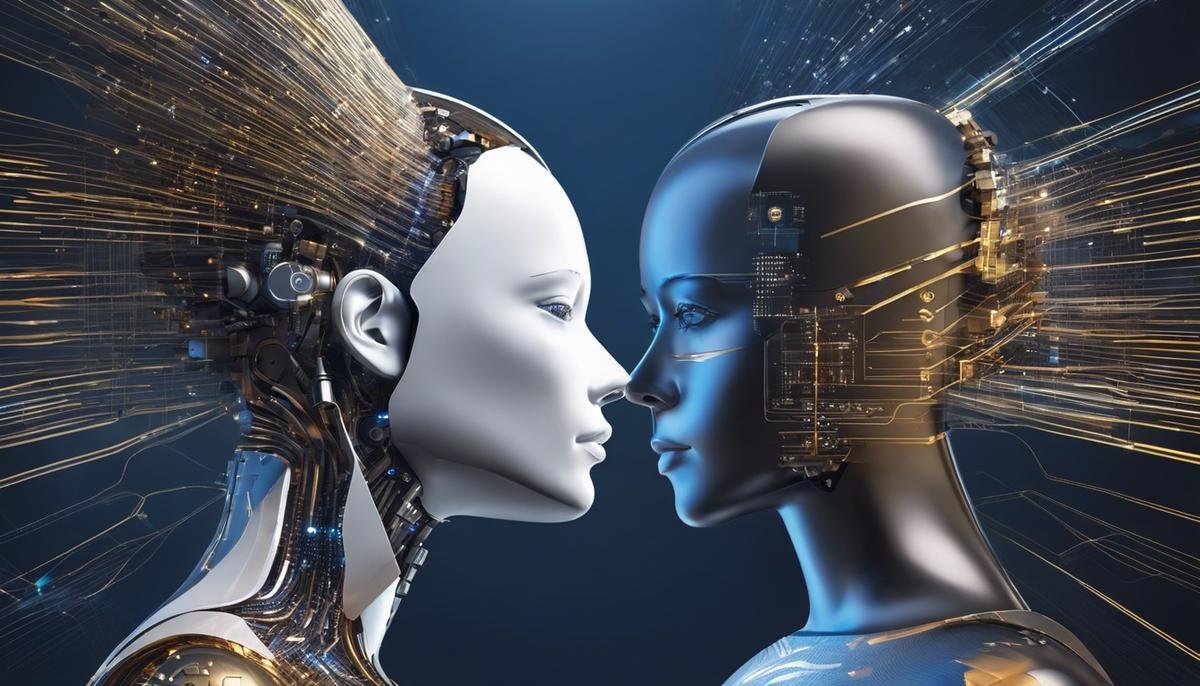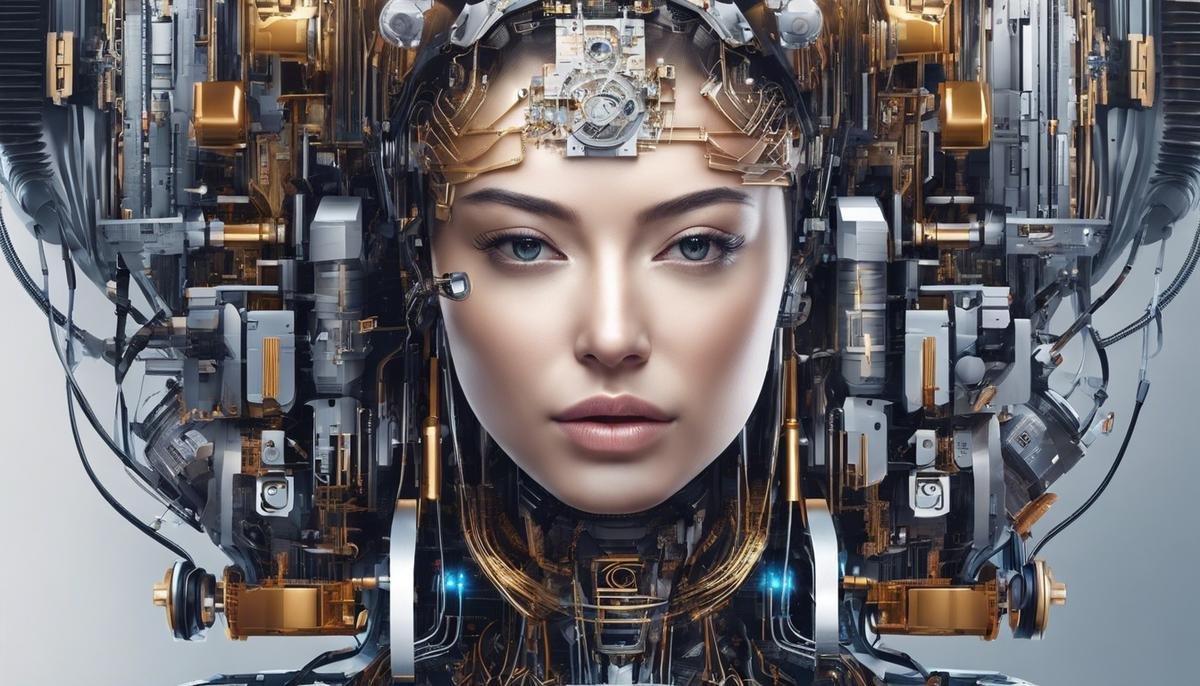As we navigate through the brave new world of technology and digitalization, two pivotal areas have synergistically converged—Artificial Intelligence (AI) and Gender Equality Policies within the European Union (EU). From philosophical roots to practical applications, EU gender equality policies paint a vibrant mosaic of political, social, and economic sectors that have evolved to foster equality. Yielding influence and reshaping vital interfaces of technology and policy development, AI’s interplay is increasingly coming under scrutiny within the EU policy framework.
Understanding EU Gender Equality Policies
The Foundational Understanding of Gender Equality Policies Within the European Union
The European Union’s dedication to gender equality dates back to its foundation when the principle of equal pay was embedded in the Treaty of Rome over six decades ago. In essence, the European Union has long recognized that equity is paramount in attaining an inclusive society as well as a flourishing economy.
In the ensuing years, these foundational gender equality ideals have evolved and expanded. Numerous frameworks have been established to incorporate gender inclusivity into multifarious aspects of economic and social policies, among these, healthcare, labor, and education. More importantly, the European Union continues to fine-tune its strategies to ensure gender mainstreaming, which fundamentally means integrating gender perspectives into every stage of policy processes.
One of the key aspects embraced within the European Union’s approach to gender policy is the fact that gender inequality is not only ostensibly observed in discard-able disparities or injustices. Rather, it is embedded in systemic structures of societies, economies, and polities. Hence, there is an endeavor to change these structures to achieve gender equality.
A robust analysis of the European Union’s policy on gender equality reveals a multi-faceted and iterative path: from formal legislation to detailed policy measures, from the integration of gender issues into all realms of policy-making to the enforcement of gender budgeting. It is inscribed in the Strategic engagement for gender equality 2016-2019, which is the European Commission’s work program aiming to improve gender equality in diverse areas like gender-based violence, economic independence, and decision-making. Furthermore, concerns extend to women’s rights outside European borders, acknowledged in the EU Gender Action Plan (GAP II) for foreign and security policy.
Pivotal also is the role of the European Institute for Gender Equality (EIGE). Established in 2006, the Institute serves as the knowledge center for gender equality policies and aids in the more effective integration of gender equality into EU policies. The EIGE’s mandate includes providing research, data collection, and technical expertise to the EU member states and the European institutions.
The understanding of gender equality within the EU, thus, decidedly stretches beyond mere lip service to the concept. It aims at a holistic understanding that called for institutional architecture, comprehensive legislation, mainstreaming gender in all domains of policy-making, and ensuring external actions are gender-responsive.
However, gender equality remains an unfinished agenda. The European Union’s Gender Equality Strategy (2020-2025) constitutes a testament to its undeterred commitment to this cause. Anticipating the forthcoming challenges, this recent strategy defines new initiatives aimed at promoting a gender-equal Europe in a rapidly changing world.
In conclusion, the European Union’s approach to gender equality is an indubitable embodiment of blending its founding principles with contemporary needs. It represents a dynamic, rigorous, and holistic understanding that not only needs to be acknowledged but also replicated globally for the attainment of a fair and just society. Nevertheless, the road to complete gender equality is still unfolding. The myriad challenges that lie ahead will only demand more comprehensive strategies, relentless commitment, and manifold collective efforts.

The Emergence of AI in the EU Policy Framework
The Emergent Role of Artificial Intelligence within the EU Gender Policy Ecosystem
Incorporation of Artificial Intelligence (AI) in the policy framework of European Union (EU) garners new perspectives. Unraveling conventional methodologies, AI’s advent shakes up the policy decision landscape with a precision that streamlines processes, optimizes resources, and enables evidence-based prognoses. This paradigm shift can foster advancements within one of the EU’s core values – gender equality.
In the last century, AI technologies have gained momentum, creating transformative impacts across industry sectors. Recognising this potential, the EU has embraced AI as a powerful tool to drive its policy agenda forward. A harmonized approach to integrating AI and data into policy processes can strengthen EU’s commitment to gender mainstreaming.
Artificial Intelligence has the capability of providing refined data analysis, setting the groundwork for informed policy decisions. Intelligence systems can identify patterns and trends, highlighting areas that require policy interventions. For gender policies, AI can help uncover hidden bias and structural elements perpetuating inequality, thus advancing EU’s gender equality crusade.
Moreover, the utilization of AI in monitoring and evaluation procedures can enhance efficiency in tracking progress and program effectiveness. Establishments like EIGE could significantly benefit by incorporating AI in their operations, as a means to accelerate the promotion of gender equality.
AI also facilitates predictive analysis that can be used to simulate various policy outcomes, accounting for multiple variables. This kind of robust approach could help design policies addressing diverse aspects of gender equality like gender-based violence, economic independence, and decision-making.
Although one must not overlook AI’s inherent challenges such as potential data bias and ethical considerations, the EU’s stringent regulatory framework can provide safeguards.
Contemporary initiatives such as the EU Gender Action Plan or the Gender Equality Strategy (2020-2025) hint at the Union’s readiness for digital transformation, striving for gender equality within our evolving world. AI is poised to enliven this vision by providing robust, expansive, and nuanced data analysis.
The futuristic vision of the EU policy framework will prioritize innovative digital technologies, amongst which AI would undoubtedly hold prominence. Thus, the role of AI is not confined to any singular facet, but rather interlaced throughout the mechanisms that drive EU’s gender mainstreaming mandate. Our understanding of this intricate machine-learning marvel is still in its nascent stages, unlocking new prospects and challenges in every stride. Capitalising on AI’s potential can bridge gaps between ambitions and achievements, steering the EU’s tireless pursuit to establish gender parity.

AI and Gender Equality Policy: Confluence and Challenges
The confluence of Artificial Intelligence (AI) and gender equality policies signals a new era of policy implementation in the European Union landscape. The integration of AI in the EU policy framework has proven to be transformative – completely dismantling traditional policy-making structures and replacing them with advanced methods rooted in data-driven decision-making processes.
AI, with its vast capabilities, has emerged as a notable tool for gender mainstreaming – a strategy to ensure that the different experiences and needs of genders are considered in policy design and implementation. The utilization of AI-driven algorithms for data interpretation offers more inclusive, efficient, and refined analyses than traditional manual methods. It critically allows the visualization of hidden biases, systemic barriers, and various structural elements that perpetuate gender inequality. This is a significant stride in the field of gender studies, offering an empirical lens to view and rectify long-engrained inefficiencies.
Moreover, AI technologies augment the efficiency of monitoring and evaluation procedures integral to policy formulation. Through machine learning techniques, AI can predict trends, grasp complex metrics, and perform multivariate analyses – all of which can be channeled towards designing more comprehensive and efficient gender equality policies.
The expansion of AI into the realm of policy-making, however, is not without challenges. The context and cultural nuances that constitute a significant aspect of gender policies may not be perfectly accounted for by AI, creating potential oversights. Furthermore, as AI systems learn from existing data, there is a possibility for these algorithms to reinforce the very gender biases they are employed to eliminate. This necessitates the development of checks and balances to minimize, if not eliminate, such aberrations.
As AI moves to the forefront of the EU policy framework, it propels a digital transformation that facilitates the delivery of essential services, increases efficiency, and fosters innovation. The EU demonstrates readiness for this digital shift with initiatives like the Digital Europe Programme and the Digital Single Market, indicating a profound exploration of the potential of AI in bridging the gender parity gap.
While the intersection of AI and gender equality policies holds promise, it certainly involves an intricate dance – a balance between harnessing cutting-edge technology for improved policy-making and ensuring accurate, equitable gender representation within the confines of the digital realm. It represents an exciting frontier for fostering a digitally inclusive society while shaping the architecture of gender equality policies for the future.

AI Strategies for Enhancing EU Gender Equality
The incorporation of Artificial Intelligence (AI) into the EU policy framework can potentially transform gender mainstreaming strategies by refining existing approaches to data analysis and fostering more informed policy decisions. AI paves the way towards confronting deeply entrenched systemic bias and uncovering complex structural elements that perpetuate gender inequality. By leveraging AI algorithms for refined data interpretation, it becomes increasingly feasible to mine for nuanced insights related to gender disparities.
Furthermore, AI can dramatically enhance the efficiency of monitoring and evaluation procedures central to policy formulation, thereby fostering a more evidence-based approach to gender mainstreaming. This comprises using AI to monitor the impact of gender-focused policies, vigilantly detecting any unintended consequences, and facilitating timely tweaks to the policy design. Predictive modeling, a significant AI feature, can further aid in framing comprehensive gender equality policies by anticipating future trends and behaviors, which can be instrumental in devising preventive or mitigative strategies.
However, any engagement with AI is not free from challenges. While AI systems have the potential to introduce efficiencies, unregulated or poorly regulated use can lead to the reinforcement of existing inequalities. Biases embedded in algorithms could perpetuate harmful stereotypes or inadvertently exclude certain demographic groups from policy benefits. Therefore, deploying AI technologies for gender mainstreaming must be accompanied by adopting safeguards to prevent the amplification of harmful biases.
The EU, in recent times, has undertaken several initiatives indicating its readiness to embrace digital transformation. The ‘Digital Europe Programme’, for instance, is aimed at reinforcing Europe’s digital capacities related to AI. Simultaneously, the ‘Digital Single Market’ strives towards a seamless pan-European digital market boosting digital innovation and growth. These are constructive steps towards embedding AI in the EU policy framework.
Moreover, EU’s Gender Equality Strategy (2020-2025) explicitly recognizes digital gender gaps and seeks to promote the digital inclusion of women and girls. This acknowledgment marks the start of an essential process of striking a balance between leveraging AI in an attempt to improve policy-making and ensuring that women and girls are equitably represented, benefitted, and not harmed in the rapidly transforming digital world.
The ongoing exploration of AI’s potential in achieving gender parity is therefore promising yet fraught with challenges. The key lies in harnessing the power of AI to design gender-sensitive algorithms, promote fairness, avoid reinforcement of stereotypes, and ensure that the digital transformation drives forward the agenda of gender equality rather than impeding it. It is indeed an intriguing space that warrants greater examination, informed vigilance, and proactive collaborative action to achieve sustained progress in the ambitious journey towards gender equality in the European Union.

Future Trajectory: AI and EU Gender Policy
As we step into the realm where the amalgamation of Artificial Intelligence (AI) with European Union (EU) gender equality policies lays the foundation for a more inclusive society, we encounter an innovative transformation, bearing an unprecedented potential for impact on policy-making, monitoring, and evaluation.
AI technologies portray an unseen potential for advancing the concept of gender mainstreaming, with their capacity to extract and analyze large volumes of data to derive valuable insights into issues pertaining to gender disparities. Algorithms powered by advanced machine learning techniques could potentially mine unknown nuances within the complex layers of data that human analysts might overlook. These insights promise a more refined perspective on gender issues, thus aiding lawmakers in making more informed policy decisions.
Noticeably, AI nudges the efficiency of the monitoring and evaluation process towards unprecedented levels. The immense data processing capabilities of AI can monitor the progress of policies and evaluate their outcomes in real-time, thereby bridging the current gaps in the feedback loops of policy-making.
One of the most astounding potentials of AI lies in the arena of predictive modeling. The tech offers a more refined evidence-based approach for drafting comprehensive gender equality policies. By predicting the potential impacts and outcomes of a policy, lawmakers can tailor interventions more precisely, consequently leading to a more targeted approach to addressing gender disparities.
However, within this constellation of opportunities, lie formidable challenges that could hinder the deployment of AI for gender mainstreaming. One of the most pressing concerns is the prevailing bias in AI algorithms which may result from prejudiced inputs or skewed datasets. This bias could counterproductively amplify gender disparity if left unaddressed. Therefore, creating AI systems that accurately reflect the complexities of gender issues, without oversimplifying or stereotyping, is a gigantic task.
To navigate such challenges, the EU has embarked on several initiatives to embrace digital transformation and AI. The Digital Europe Programme and the Digital Single Market are prime examples of the EU’s commitment to the digital revolution. The recent EU Gender Equality Strategy significantly demonstrates the rejuvenated focus on addressing digital gender gaps, highlighting the contemporary approach to gender equality in the digital era.
However, striking a balance between exploiting the potentials of AI for improved policy-making and ensuring equitable gender representation in the digital domain remains a precarious task. AI algorithms should pave the way for fair representation, rather than reinforcing prevailing gender biases or stereotypes.
The possibilities of AI in transforming gender mainstreaming strategies are enormous; so is the need for relentless examination, vigilance, and collaborative action. Effectively harnessing AI to achieve gender parity in the EU is not an effortless march; it requires cautious navigation between the potential benefits and risks, agile adaptability, and most importantly, a deeply entrenched commitment to a gender-equal society.
With a journey laden with trials and breakthroughs, the future trajectory of amalgamating AI with EU gender equality policies is an exciting watch. As we stride closer to achieving gender equality, the digital transformation orchestrated by AI will undoubtedly play a pivotal role in shaping this future.

Much like uncharted territory, the intricate intersection of AI and EU gender policies presents a kaleidoscope of potential advancements, foreseeable challenges, and ethical considerations to navigate. The extensive digital landscape, coupled with AI-driven interventions, predictive capabilities, and data-driven policy designs, is poised to redefine the future of gender equality within the EU. This metamorphosis will set forth a trajectory that won’t merely shape policy and technological decisions but also the essence of societal values we uphold in our collective journey towards genuine equality.



